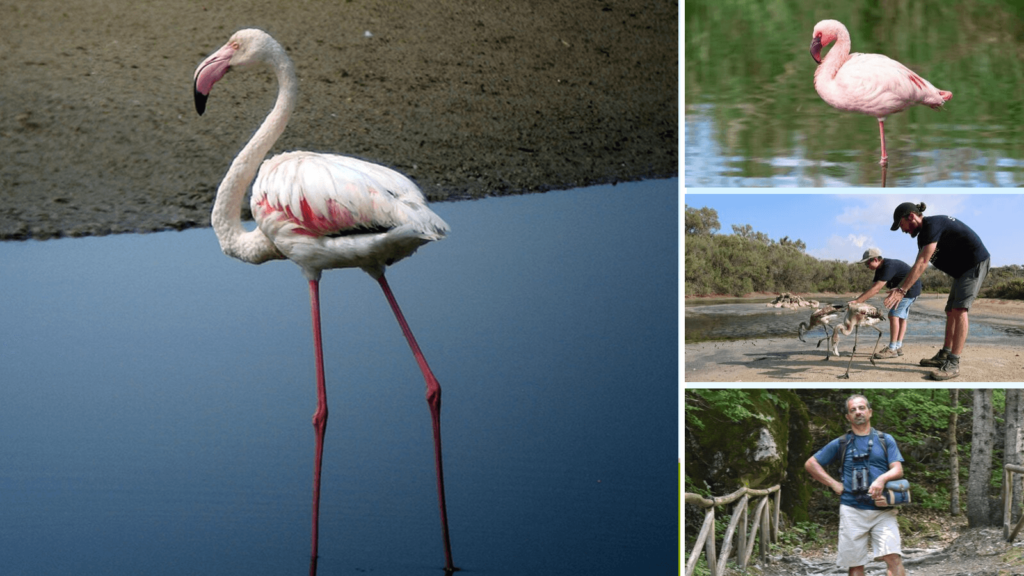With So Many Flamingos Landing In Malta (And Way More To Come) Here Are 7 Things You Need To Know

Whenever a flamingo lands in Malta, there is often a flurry of activity.
Some people are happy to enjoy the rare sight, while others are spurred to protect them due to a handful of individuals trying to hunt them.
However, for ornithologists and bird-watchers, seeing more and more lone flamingos land in Malta is a worrying trend. Charles Coleiro, an ornithologist and warden at the Simar Nature Reserve, spoke to Lovin Malta about why we might be seeing more of these surprise landings happening earlier in the year as time goes by.
1. Shifting food and water sources means that flamingos patterns may change as the climate changes as well.
“The migration patterns of flamingos are often regulated by rainfall and water availability,” Coleiro explains. “It could also be that in some colonies water dries up quickly and therefore no more food is available.”
“Now, flamingos used to be seen on migration in Malta mostly from September to November, but in recent years we are having more birds migrating in August and sometimes even at the end of July.”
“Migration patterns often change over time mainly due to climatic changes.”
“These changes often influence our habitats and thus will have an effect on the biodiversity. In the case of the flamingos, these might be affected by droughts in the wetlands they breed in. As is the trend in recent years where rainfall is decreasing in the Mediterranean, this will have an impact on the wetlands,” he said.
2. Once a colony is deserted, flamingos migrate earlier than usual.
“This could also explain the tiredness of some juveniles who might not yet be ready to fly long distances. I have personally seen juveniles simply fall back from the main flock not being able to keep up,” he said.
3. It’s mostly juveniles that land in Malta.
Flamingos are known to be social birds, sticking together and forming close bonds… so when one juvenile bird lands alone, as is often the case in Malta, alarm bells go off for bird-lovers.
“These flocks will always include their parents. In most cases, the flock returns back for the tired juveniles… but if they see that the juveniles cannot make it, they continue without them,” he points out.
4. Breeding numbers are on the increase.
“One reason for this early migration is probably due to the fact that their breeding numbers have increased and hence the larger numbers being recorded in the Maltese islands,” he continues.
“Since the juveniles are only born a few months before, sometimes some individuals might not have flight muscles developed well and thus can become more tired or exhausted during long flights. Often they are left behind from the large flock they are migrating with and often they land at the nearest land they find,” Coleiro said.

5. Though the birds just need a few days to recuperate from their exhaustion, getting cut off from the rest of the flock is not ideal for them.
“Flamingos migrate in large flocks and that the flock is composed of various families that have bred in the same colony. Flamingos also nest in colonies often several hundred and even thousands-strong. One particular site in nearby Tunisia had 22,000 flamingos nesting together this year,” he said.

6. Flamingo colonies can be found throughout the Mediterranean, in places like Tunisia, Algeria, France, Turkey, Sardinia and Sicily.
“The flocks we see in Malta come from many of these countries,” he said.
7. With the chance of a flamingo landing unexpectedly in Malta, Coleiro explains what should be done if you come across a tired flamingo.
“When someone sees a stranded or tired flamingo they should follow these steps. If the flamingo is close to a road, stand in its way to stop it from moving forward. Call BirdLife Malta’s emergency number 21347646. Do not touch it – flamingo necks and legs are very delicate. And do not give it food or water – their digestive tract is very delicate,” he ends.
Cover photo: left, Nicholas Galea, top right inset, Emanuel Mallia.